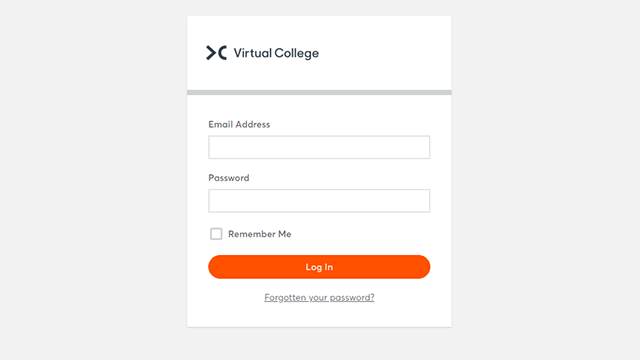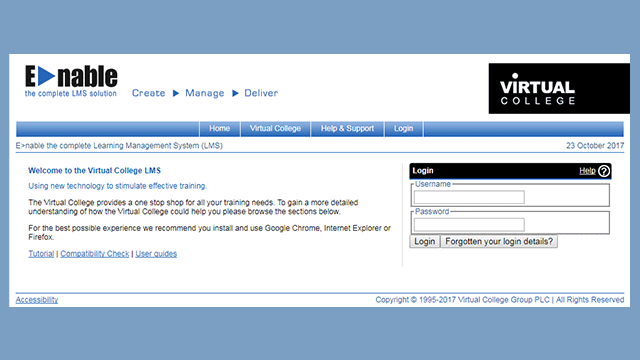Effective Food Allergen Training For Food Handlers
Food handling is a responsibility required in a variety of different jobs. From working in a kitchen environment at a restaurant to serving food in a cafe or working at a food counter in a retail space, food handlers come into contact with many different ingredients each day, some of which are classed as allergens.
There are plenty of things to consider about health and safety when you’re handling food, but one of the most important elements of this is allergen awareness. A significant percentage of the population suffers from food allergies, and as a food handler, you’re in a position where your actions can directly impact someone’s health.
Food allergen and intolerance training is the best way to ensure that staff handling food are aware of the risks that allergens present and know which procedures they should follow to reduce or remove these risks. In this article, we’re going to take a look at some of the important points that effective food allergen training for food handlers should include.
Why is Food Allergy Training so Important?
Over the past twenty years, hospital admissions for anaphylaxis have increased significantly in the UK, although there are thought to be less than ten deaths caused by the reaction each year. It is important therefore that customers with known food allergies or intolerances can make an informed choice when choosing to eat out from restaurants and takeaways, or when purchasing from a retailer, to help reduce their risk of exposure to food allergens.
Food allergen awareness training ensures that those working with and preparing food are able to give this important information to customers with allergies. It also prevents unintentional allergenic cross-contamination by promoting good food hygiene practices and procedures, allowing customers to feel safe when choosing products that don’t claim to contain allergens.
Effective food allergen training for food handlers covers a wide range of different topics. Below are some of the most important elements of this kind of training.
What are the Main 14 Food Allergens?
It’s important for anyone undergoing food allergen awareness training to understand what the most common risks are when it comes to food. In the UK there are currently fourteen food allergens which must be clearly stated if they are present in any products. These 14 allergens are:
- Celery
- Cereals containing gluten - including wheat, rye, barley and oats
- Crustaceans - such as prawns, lobster and crabs
- Eggs
- Fish
- Lupin
- Milk
- Molluscs - such as mussels and oysters
- Mustard
- Nuts - including almonds, hazelnuts, walnuts, brazil nuts, cashews, pecans, pistachios and macadamia nuts
- Peanuts
- Sesame seeds
- Soybeans
- Sulphur dioxide and sulphites
It’s possible to be allergic to any ingredient in food, but the above products are responsible for the majority of allergic reactions. If any of them are present in the products you are handling, it’s important to be aware of this and act accordingly.
Allergen Labelling and Knowledge Requirements
When working in a kitchen environment, all staff need to have awareness of allergens in the food they prepare and be aware of the policies and procedures in place. Different allergen labelling rules apply to different food products, and these are divided into pre-packed and non-prepacked (loose) foods.
Pre-Packed Food
For prepacked foods or foods that are put into packaging before being sold, an ingredients list must be available with the product, usually by being displayed on the packaging. Any allergenic ingredients must be emphasised (e.g. underlined or in bold) every time they appear on the ingredients list.
Non-Prepacked (loose)
Non-prepacked (loose) foods include many different food products, such as bread sold in a bakery, pick and mix confectionery and meals served in restaurants and takeaways. If you’re preparing non-prepacked foods, you will need to be aware of allergen information for every item that contains any of the 14 allergens.
The allergen information for each recipe should be documented, kept up to date and included in any explanation of the dishes provided. This might be on the menu, displayed next to the product’s name, or in a document that customers can read before making a purchase.
Allergenic ingredients should also be kept in either the original containers or re-labelled to reflect their contents, to avoid cross-contamination.
Cross-Contamination
In the kitchen or food preparation area, there are many ways that foods can become contaminated with allergens, despite not containing the allergen in its original ingredients. This presents a serious health and safety risk to people with allergies, as they might accidentally consume a trace of an allergen that wasn’t indicated on a product’s packaging.
To help prevent cross-contamination of food allergens, allergen-containing ingredients should be kept separately - for example in closed, sealed and properly labelled containers. These containers should be washed thoroughly between uses and ideally only be used to store one kind of product.
Allergen cross-contamination can also occur using shared equipment, such as deep fat fryers. For example, to cook gluten-free chips you can’t use the same oil which has been previously used to cook battered fish. Any dressings or garnishes for the dish need to be considered, too.
Allergen-free dishes should be prepared on separate work surfaces, chopping boards and with separate utensils. These utensils must be cleaned thoroughly before use, especially if they have been used previously to prepare food containing allergens. Food handlers should also wash their hands between preparing different dishes so that allergens aren’t transferred.
Legislation
One of the reasons that food allergen and intolerance training are so important for food handlers is that it helps their employer to comply with certain health and safety legislation. The key piece of legislation is explained below.
Food Information for Consumers Regulation 2014
The most important piece of legislation currently in force when it comes to allergens in food is the Food Information for Consumers Regulation 2014. This is an EU ruling designed to help make sure that people who suffer from allergies can quickly, easily and reliably determine which foods are safe or not safe for them to eat.
This Food Information for Consumers Regulation is a critically important piece of law that was put in place to reduce serious illnesses and deaths that result from consuming allergens. Failure to adhere to this legislation could result in criminal prosecution in some cases, so all relevant employees within the catering and hospitality sector must understand it.
The primary requirement of the Food Information for Consumers Regulation is that items containing any of the 14 primary allergens must be clearly labelled on pre-packaged food so that consumers know what they are purchasing. There are also some specifics around the way products are labelled, such as the requirement for allergens to be clearly distinguished from normal ingredients.
FAQs
What are food allergen data sheets?
Food allergen data sheets are documents used by food businesses to track which items that they sell contain one or more of the 14 main food allergens. These sheets include every product or dish on sale and then list all of their ingredients, providing a useful resource for staff to consult if a customer is asking about the presence of allergens.
What legislation regulates allergen labelling on food products?
A recent piece of legislation known as ‘Natasha’s Law’ is responsible for regulating the labelling of allergens on food products that are pre-packaged for direct sale (PPDS). All other allergen labelling guidelines are dictated by the Food Information for Consumers Regulations 2014.
Who is key in protecting customers with food allergies?
The Food Standards Agency (FSA) is the main organisation responsible for regulating and monitoring allergen labelling and providing allergen guidance, therefore protecting customers with food allergies. However, anyone that works with food products that contain allergens is also a key part of the system protecting customers with allergies, as they need to abide by the guidelines outlined by the FSA and ensure they are aware of which products could cause an allergic reaction.
Summary
Employers need to ensure that all staff working with food have adequate training and are aware of allergenic ingredients that are present in the foods they sell, as well as the procedures and policies of a business when it comes to handling allergen information requests. It’s the employee’s responsibility to adhere to what they learn in their training and ensure that they are able to provide customers with any allergen information they need, keeping the working environment free from cross-contamination and helping customers make informed decisions.
If you’re looking for food allergen training courses that cover the topics we’ve covered in this article and more, we offer a comprehensive ‘Food Allergy Awareness’ online training course, as well as a ‘Food Safety & Hygiene Fundamentals Package’ for food handlers wanting to learn more about food health and safety.

























































